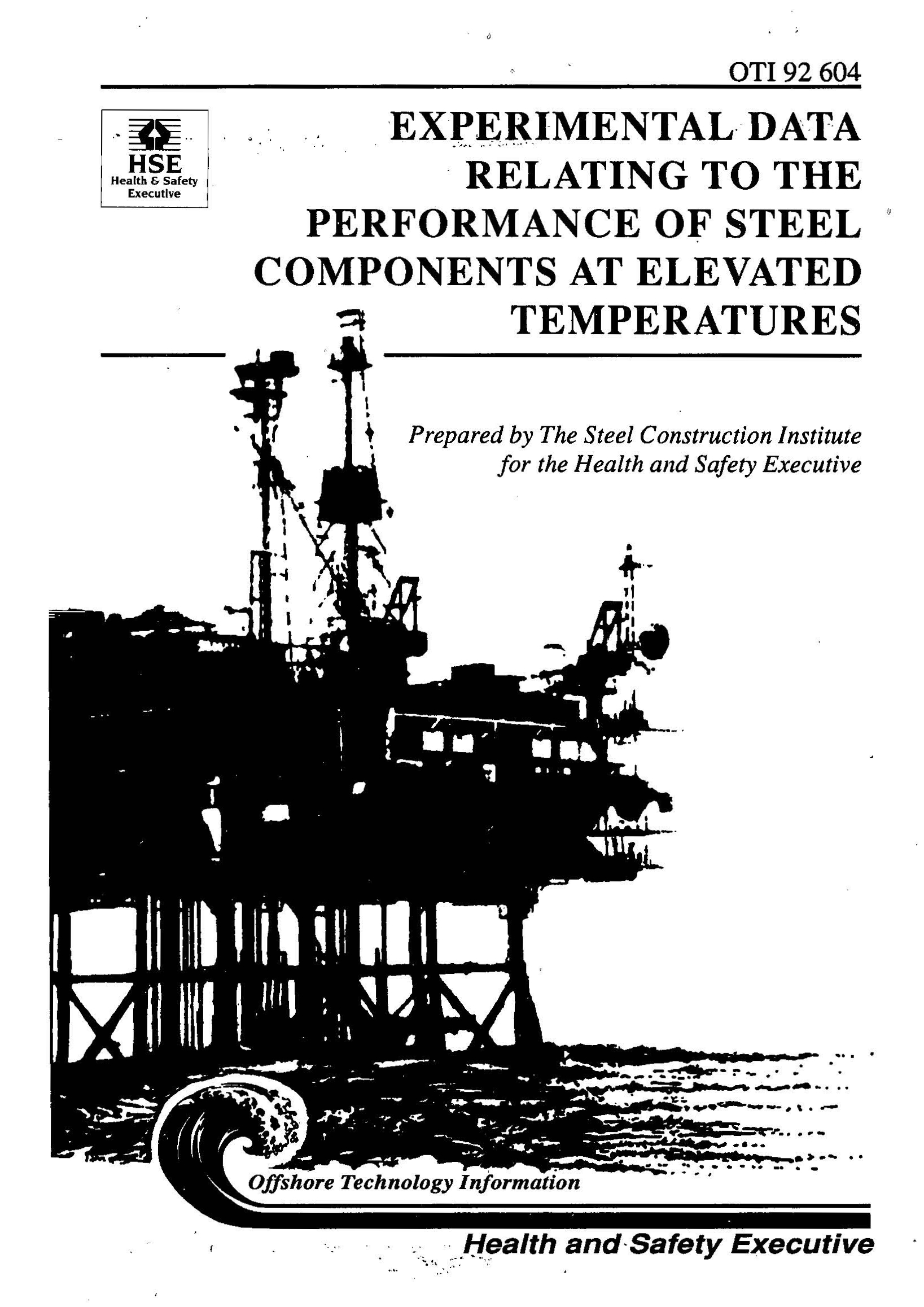HSE OTI 92 604
Experimental data relating to the performance of steel components at elevated temperatures
Work Package FR1
BFETS Phase 1

FABIG Members: Log-in to access all FABIG resources LOG IN
SUMMARY
In this work Package, an examination of the temperature dependent material properties for the various types of steels that are commonly found in offshore installations has been made.
Two broad groupings of steel material types are identified. These are the structural steels (low carbon steels which belong to material standards BS 4360, BS 7191 and API Grade 5L) and 'boiler' steels used for pressure vessels and some piping. within these two broad groupings, the underlying behaviour of steel at elevated temperature is largely defined by the chemical composition, but this may be modified by the manufacturing process.
For design purposes, the elevated temperature properties are divided into two groups, the mechanical properties such as yield strength and the thermal properties such as the specific heat of the material.
The range of temperatures for which material properties are required is itself a function of material type, but would normally include any temperature at which a material retained between 5 and 10 percent of its yield strength at 20°C. For most fire analysis purposes, material and thermal properties to temperatures of 750°C should be determined.
The type of treatments that a steel has been subjected to during the steel production process governs the strength and behaviour of that steel at elevated temperatures. Such treatments include normalizing, quenching, tempering and stress relieving. If strength has been increased by heat treatment then it may be lost in the uncontrolled heating by a fire.
There is limited test data at elevated temperatures for steels which are not the common structural steels. The test data which are available should be used with caution and the user is advised to consider the experimental basis of any data.
Steels with enhanced properties at elevated temperatures ('fire-resistant' steels) are presently available, these steels being more expensive than common structural steel and yet cheaper than the austenitic grades of stainless steel. Care should be taken when comparing different steels since the properties reported may, for example, be a 'lower bound' value for one steel compared with an average value for another. Generally speaking for temperatures in the range 300°C to 500°C, fire-resistant steels maintain better strength characteristics than low carbon structural steels.
Stainless steels have generally better fire resistance qualities than carbon steels in the temperature range 550°C-900°C. However, each type of stainless steel should be reviewed in its own right. This is particularly so if a stainless steel is to be considered for structural use.
Presently, stainless steels are mainly used for pressure vessels and pipework, and the properties given relate to these uses. In an offshore structural environment, stainless steel has been used for cladding requirements and in heat shields. Consideration should be given to the limited use of high strength RQT (Roller Quenched and Tempered) steel in offshore structures. Although high strength and low temperature toughness is inherent in this type of steel, enhanced properties are also found at high temperatures (to 650°C). However, those data available are minimal, product specific and incomplete for fire resistance considerations. Further testing and properties analysis may therefore be required.
The full report is publicly available from the HSE Website at www.hse.gov.uk/research/otipdf/oti92604.pdf.
Online purchase options:
Non-Members of FABIG are able to purchase PDF copies of the reports.